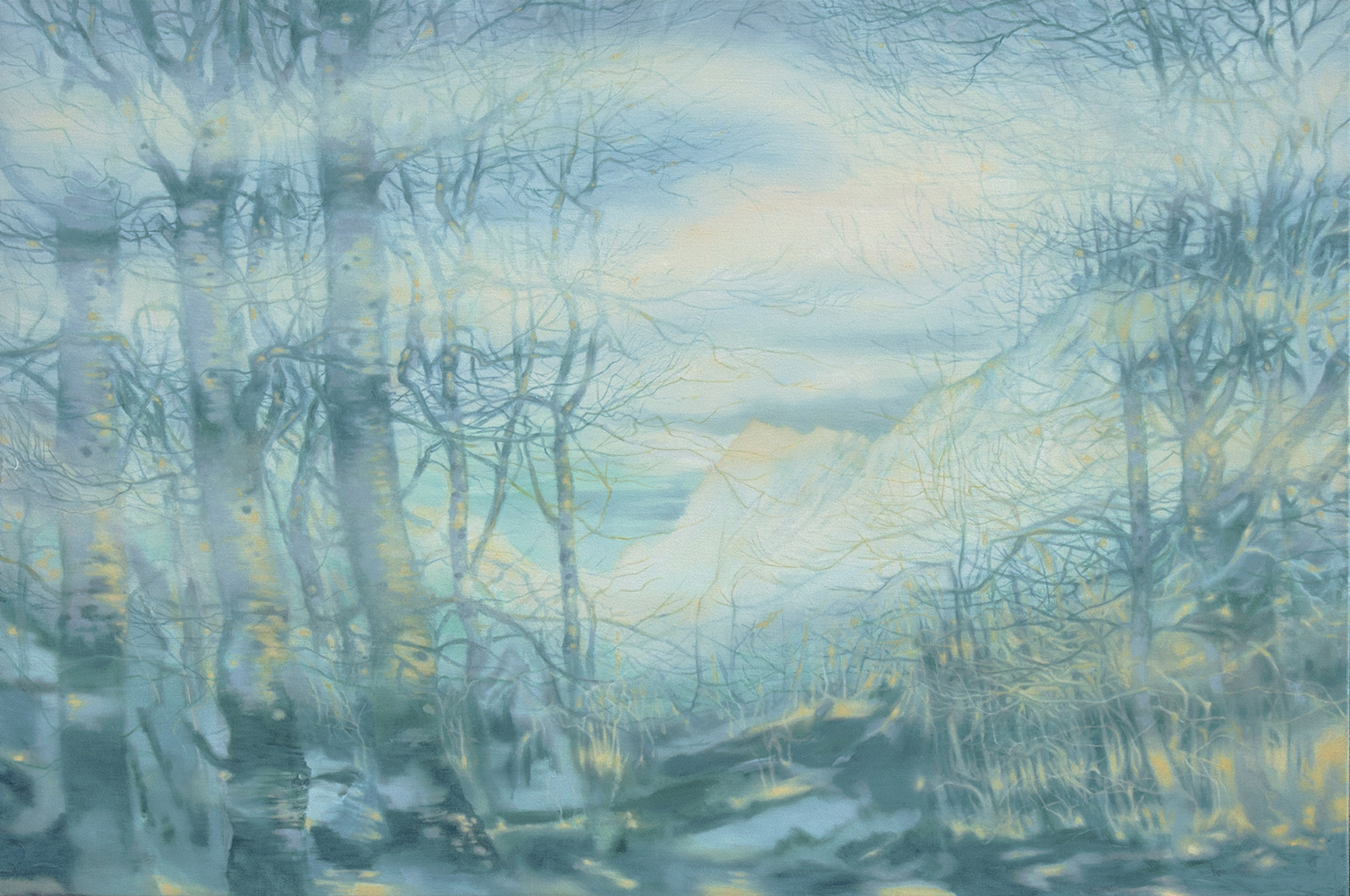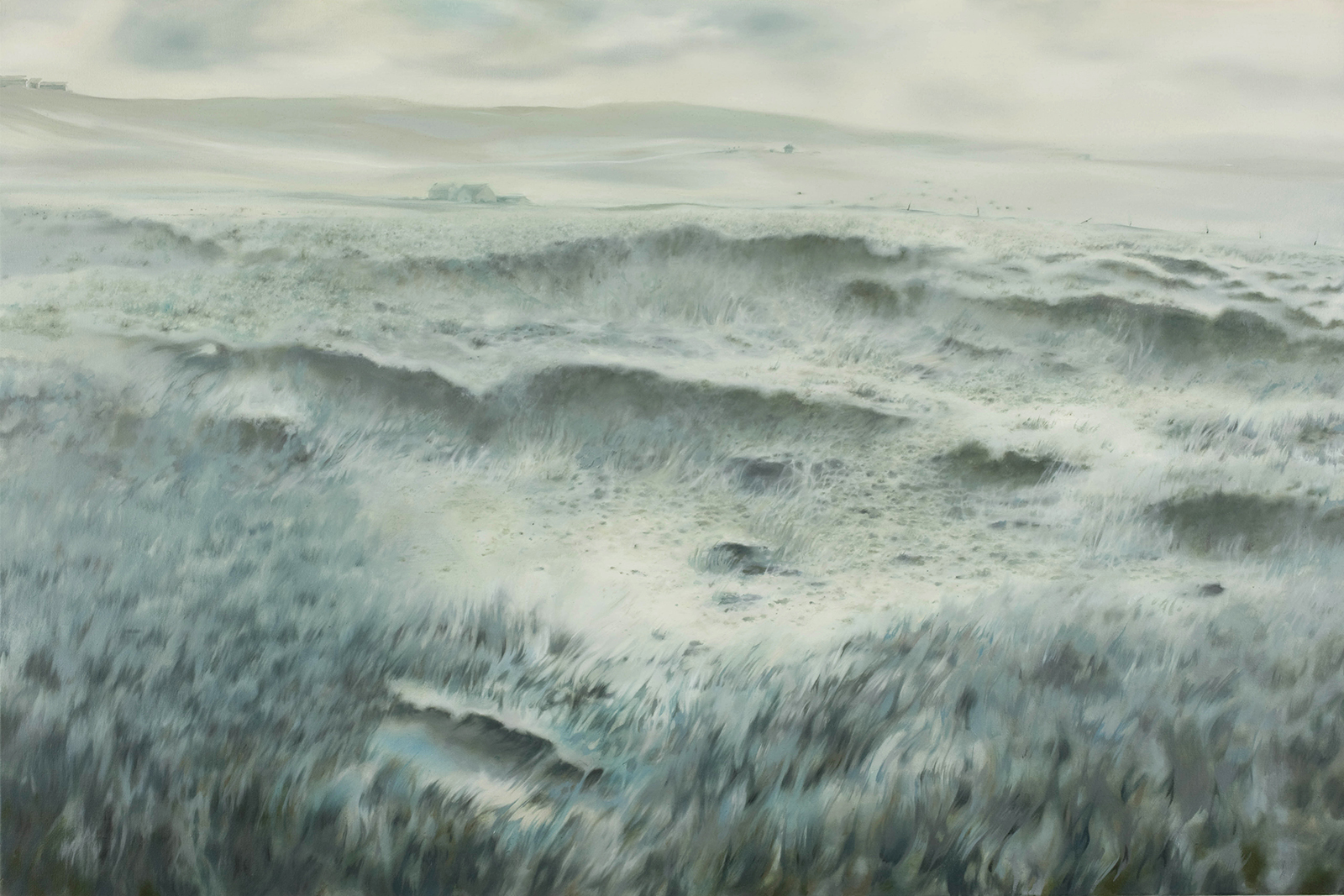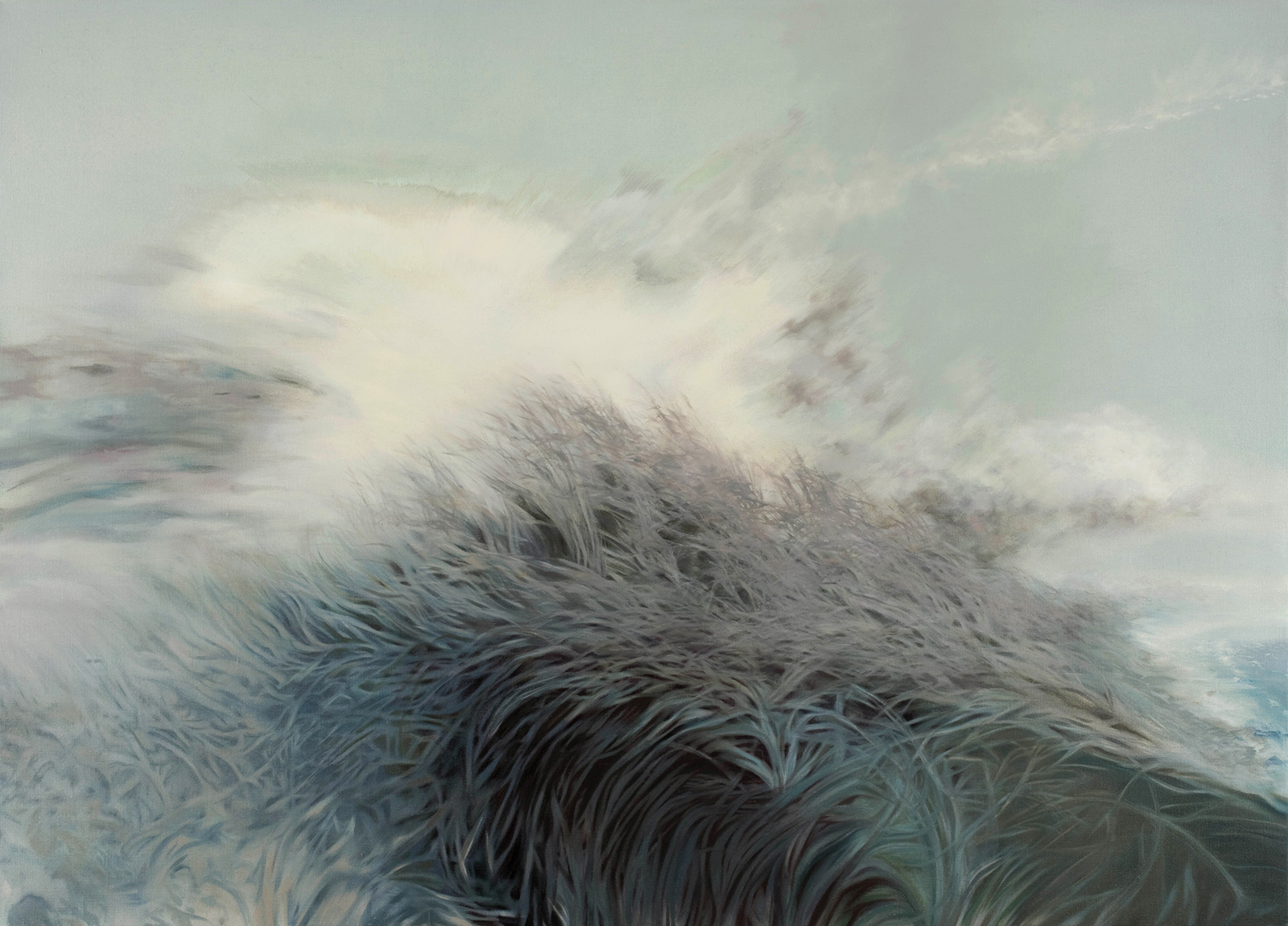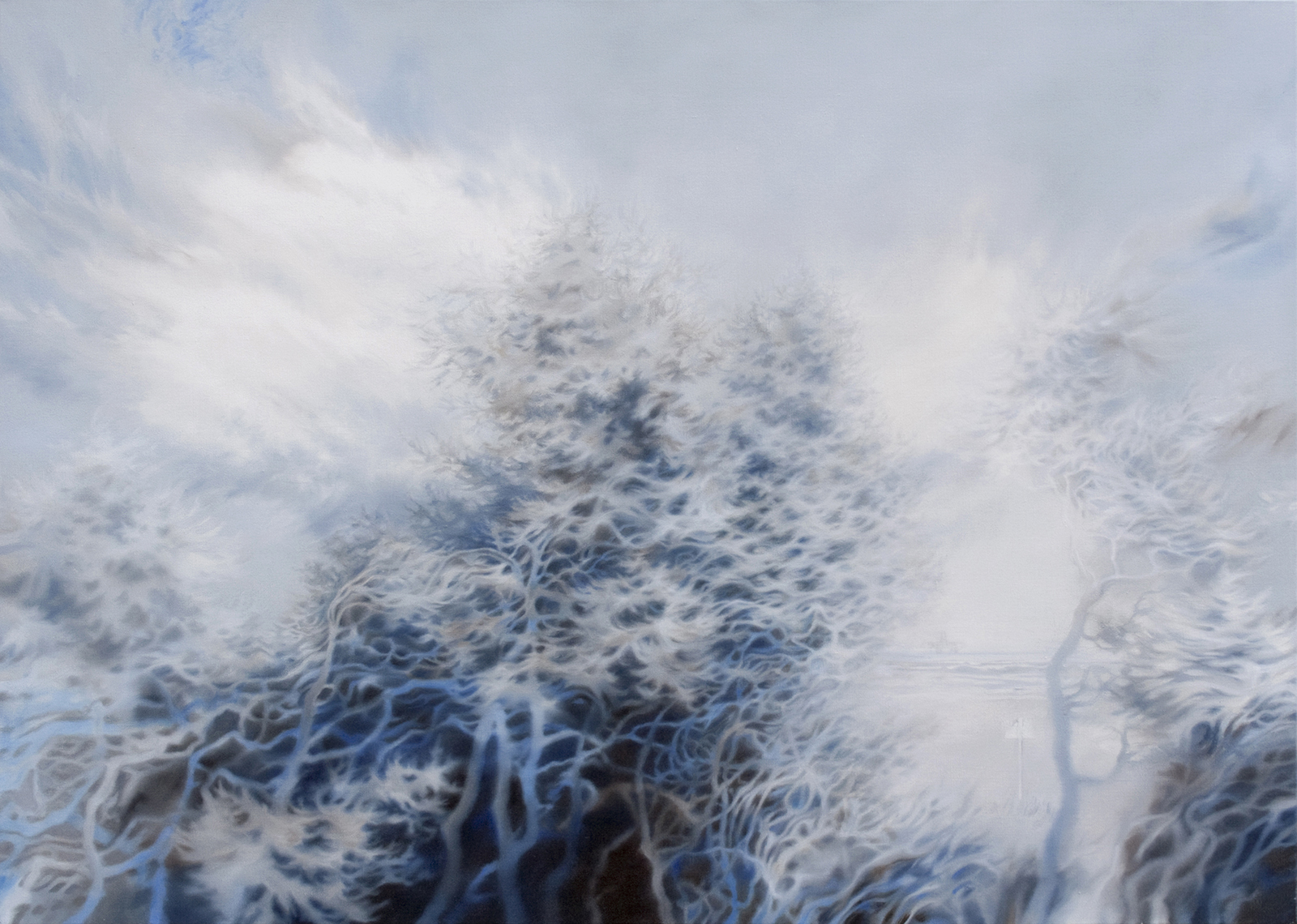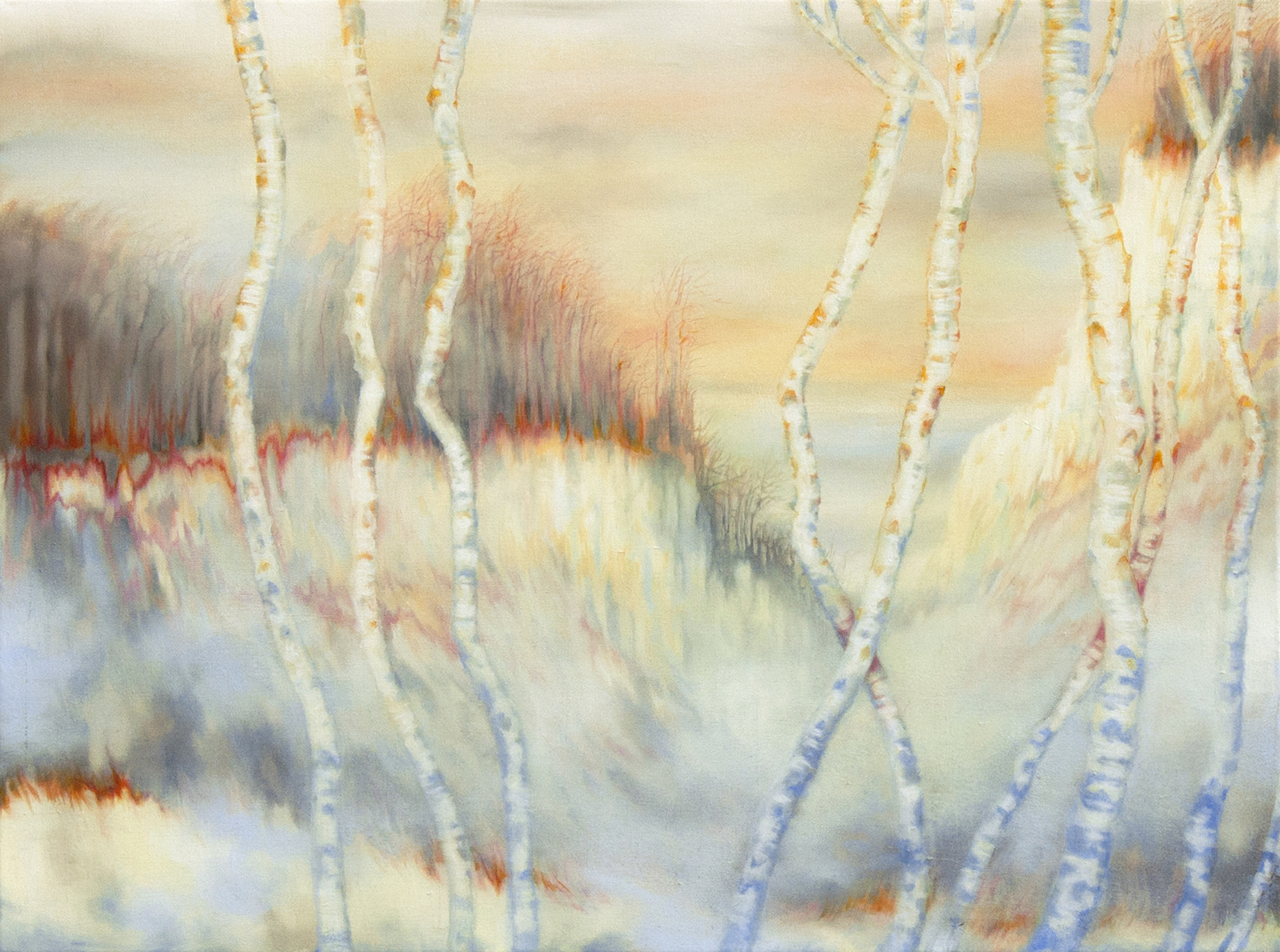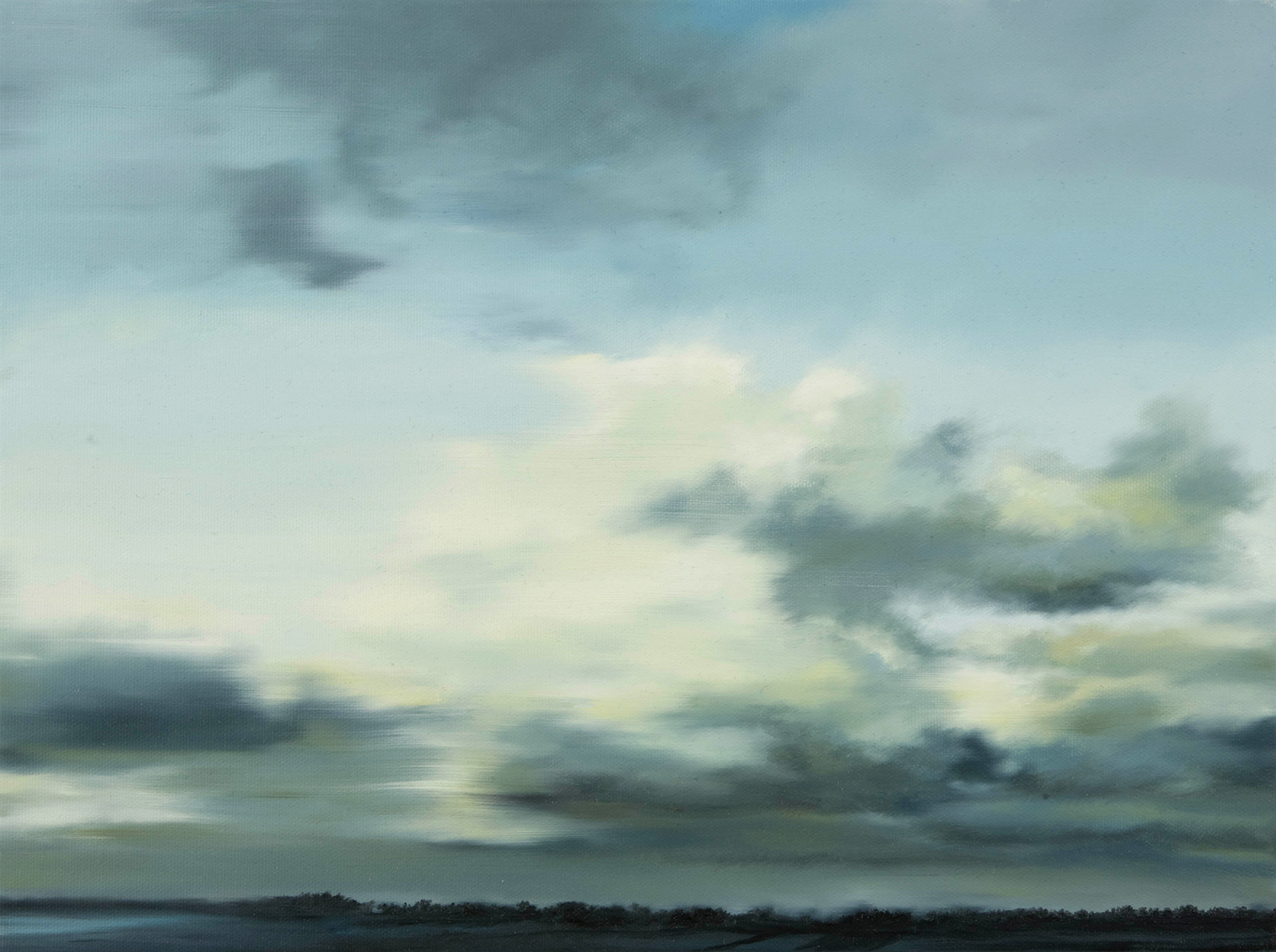Küstenlandschaften
Coastal Landscapes
Martin Jagodzinski malt Landschaften, die vom Wesen der Natur erzählen, indem die stetige Verwandlung ihrer Erscheinungsformen zum Thema gemacht wird. Eindrücke, die der Maler während seiner Reisen an die Ostsee, den Atlantik, das Nordmeer, und auch in der Mark Brandenburg in Zeichnungen und Fotos festgehalten hat, dienen als Ausgangsmaterial für die freie Komposition im Atelier. Die Landschaften und Seestücke, die so entstehen, sind keine zufälligen Spiegelungen gesehener Landschaften. So wie die Bildnismalerei nicht nur den äußeren Schein, sondern den Charakter des Portraitierten zu erfassen sucht, künden die Landschaften vom Wesen der Natur. Was sich im zeitlichen Nacheinander vollzieht, wird in ein gleichzeitiges Geschehen überführt. Dabei vernetzen sich die Elemente Schritt für Schritt, zunehmend in immer größeren Verbindungen, bis sie sich in ihnen verlieren. Dennoch behalten sie ein Eigenleben als Mikrokosmos in der endlosen Weite – als kleine Welt für sich.
Martin Lade, M. A.
Martin Jagodzinski paints landscapes that are characterized by the essence of nature, which is depicted by the constant transformation of its appearance. Impressions that he keeps by drawing and taking photographs during his travels to the Baltic Sea, the Atlantic Ocean and rural areas like the the Mark Brandenburg are used as a starting material for the free composition in the studio. The landscapes and seascapes that are thus created are not accidental reflections of real sceneries. Just as the portrait painting does not only show the appearance, but rather the character of the person the landscapes evoke the essence of nature. Events happening in temporal succession are transformed into a simultaneous incidents. In doing so, the elements link step by step increasingly in ever larger connections until they disappear. Nevertheless, they maintain their own life as a microcosm in the endless expanse – as a small world in itself.
Martin Lade, M. A.
